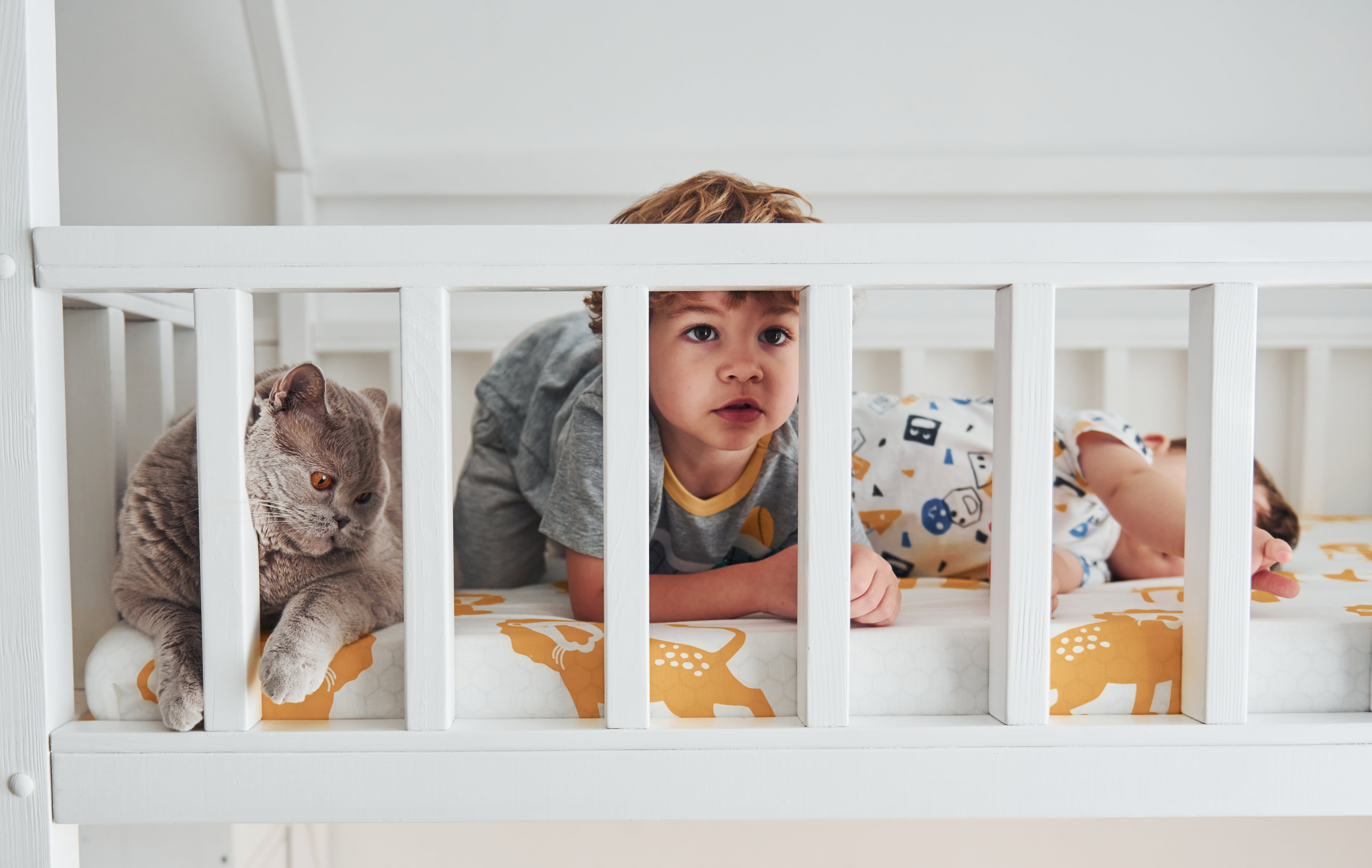Bedside Cosleeper
A bedside cosleeper is a bassinet which attaches to the side of your adult bed. It's safe as long as you follow the CSPC safety guidelines for infant sleeping spaces.
These guidelines are very similar to crib bedding standards. You can learn more about these guidelines here. When choosing a bedside sleeping device safety, comfort, and ease of use are the primary factors to consider.
Safety
Many new parents and pregnant mothers have embraced cosleeping which is also known as bed-sharing, as per the American Academy of Pediatrics recommendation that infants sleep in the same room as their parents. The Academy notes that room-sharing is safer than sleeping with a baby in the same bed because it lowers the chance of Sudden Unexpected Death in Infants or SIDS. The AAP does not recommend bed-sharing however it does suggest that co-sleeping on separate sleeping surfaces is a good option to reduce the risk of SIDS. This is why the introduction of the bedside cosleeper was important to many families.
A bedside cosleeper can be described as a crib-like sleeper that can be attached to an adult bed frame. The bedside cosleeper helps parents monitor the baby, and also gives them the option of sleeping in their own bed. The best cosleepers have strict safety standards and are built with durable, high-quality components. To ensure your child's safety ensure that you look for the Juvenile Products Manufacturers Association stamp of approval. This confirms rigorous testing and quality control.
The safety of a crib is contingent on a variety of factors. It is dependent on the way it's put in place and secured to the parent's mattress. If the bedside cosleeper is not connected to the parent's bed in a way that blocks the gaps and spaces where an infant can become trapped, it could be an hazard of suffocation. It is vital that the attachment system used for the bedside sleeper be tested in order to ensure that it is able to withstand any forces that are imposed during use, such as the parent moving on and off the sleeper. horizontal force applied to the attachment system or corners of the bedside cosleeper.
The standard for bedside beds incorporates by reference the federal consumer safety standard for bassinets and cradles (16 CFR part 1218), which includes requirements for the performance of enclosed openings with a fabric-side. The standard's mandatory requirements tackle the issue of neck and head traps by requiring after the application and release 50 lbs. horizontal force at the attachment system and the corners of the bedside sleeper, gaps greater than 1.0 in. is not allowed to be created. visit the up coming site offers read-only versions of the standard.
Convenience
Many parents are reluctant to cosleep because they are afraid of being suffocated or SIDS, or because it is a "Ferberization" that forces children to sleep alone. Anthropologists have noticed for a long time that many primates, mammals, and people from non-Western cultures sleep often. This may be because infants are comforted by the familiar voice of their mother and it can also help them learn to self-soothe.

The best bedside sleepers come with an innovative design that is attached to the side of any bed and can be swiveled for ease of access to feedings in the middle of the night or diaper changes. Choose a model that has feet that can be adjusted to accommodate different mattress sizes. It should also have a large storage area for all the baby's necessities.
Choose a bedside sleeper which is compatible with standard crib bedding so that it can be used safely as your child grows. You may also want to consider a convertible model that could transform into a play yard or deeper bassinet for a long time of use, and folds easily for transport.
Portability
Depending on the dimensions of your bedroom, a bedside sleeping system with wheels and/or a lightweight base could be more convenient to move around the house than one that has a heavy wood frame or massive base. The babybay Bedside Sleeper, HALO BassiNest Essentia and Snoo Smart Sleeper all have amazing portability features. The adjustable feet retract to accommodate platform beds and the legs fold inward to give the most comfortable closeness to the mattress and 100% mesh sidewalls that let airflow without material covering baby's mouth or nose.
The Arm's Reach Clear-Vue is a excellent option that can be adjusted in 1" increments to fit most adult beds. It can also function as a portable bassinet. It also pivots to allow for easy access to your baby to help her relax, nurse her or check on the baby during the night.
